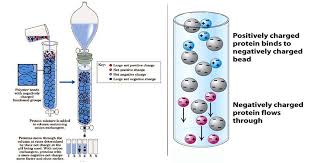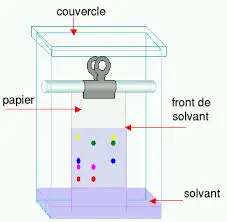Chromatography Techniques: Essential Protocols for Lipid and Molecular Analysis
Polar Lipid Extraction: A Key Step in Lipidomics Research
The Polar Lipid Extraction protocol is a critical method for isolating lipids from biological samples such as tissues and cell cultures. By using solvents like chloroform and methanol, this technique effectively separates polar lipids, which are vital for studying membrane composition, signaling pathways, and metabolic processes, particularly in lipidomics and metabolic research.
Citrate Test: A Chromatography-Based Diagnostic Assay
The Citrate Test is a biochemical assay used to determine the ability of microorganisms to utilize citrate as a carbon source. In combination with chromatographic techniques, this test helps in identifying bacterial species, making it valuable for clinical diagnostics and microbiology research.
Oxidase Test: Chromatographic Detection of Bacterial Respiration
The Oxidase Test detects the presence of cytochrome oxidase enzymes in bacteria, which is indicative of aerobic respiration. Chromatography is employed to analyze the reaction products, providing a rapid and reliable method for differentiating bacterial species in clinical and environmental microbiology.

Phosphate Assay – Lipids: Quantifying Phosphate in Lipid Samples
This protocol focuses on measuring phosphate content in lipid samples, an important aspect of lipid metabolism studies. Chromatography plays a role in separating and identifying lipid-bound phosphate groups, which are critical for understanding cellular energy transfer and membrane structure.
Lipid Monolayer Assay Protocol: Chromatographic Analysis of Lipid Interactions
The Lipid Monolayer Assay is used to study lipid-lipid and lipid-protein interactions at the air-water interface. Chromatography aids in analyzing the composition of lipid monolayers, which is essential for understanding membrane dynamics, surfactant properties, and drug delivery systems.
Fatty Acid Oxidation Assay: Chromatographic Measurement of Metabolic Activity
This assay measures the rate of fatty acid oxidation, a key metabolic process in energy production. Chromatographic techniques such as gas chromatography (GC) are used to separate and quantify fatty acid metabolites, providing insights into metabolic diseases like diabetes and obesity.
Protocols for Diabetes Research: Chromatography in Glucose and Lipid Monitoring
Chromatography plays an integral role in diabetes research by enabling the precise measurement of glucose, insulin, and lipid metabolites in biological samples. This protocol includes various chromatographic techniques to study metabolic alterations and identify biomarkers of diabetes progression.

Polysaccharide Sequencing: Chromatographic Separation of Complex Carbohydrates
Polysaccharide sequencing involves the separation of complex carbohydrate chains to determine their structure and function. Chromatographic techniques such as High-Performance Liquid Chromatography (HPLC) are employed to analyze polysaccharide fragments, aiding in research on cell walls, biofilms, and glycoproteins.
Application Guides and Protocols (Nest Group): Optimizing Chromatographic Separations
This protocol provides comprehensive guides and protocols for optimizing chromatographic separations, focusing on techniques such as HPLC and ion-exchange chromatography. These methods are crucial for purifying proteins, nucleic acids, and small molecules in both academic and industrial research.

HPLC Troubleshooting: Solving Common Chromatography Problems
HPLC (High-Performance Liquid Chromatography) is a widely used technique for separating and analyzing compounds. This troubleshooting guide addresses common issues such as peak tailing, baseline noise, and poor resolution, offering solutions to optimize chromatographic performance and improve data accuracy.
Introduction to HPLC: Understanding the Basics of High-Performance Liquid Chromatography
This protocol introduces the fundamental principles of HPLC, including the selection of columns, mobile phases, and detectors. HPLC is a versatile technique used in various fields such as pharmaceuticals, food science, and environmental analysis, offering precise and reliable separation of complex mixtures.
These chromatography protocols provide essential methodologies for lipid analysis, metabolic research, and the separation of biomolecules, making them crucial for scientific investigations across multiple disciplines